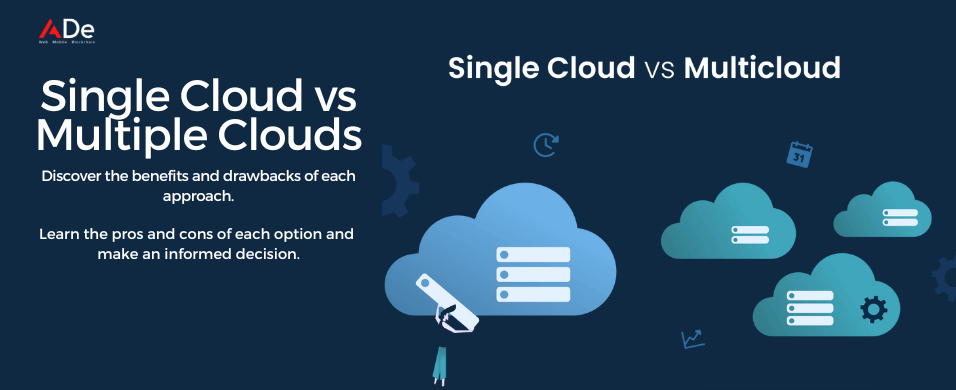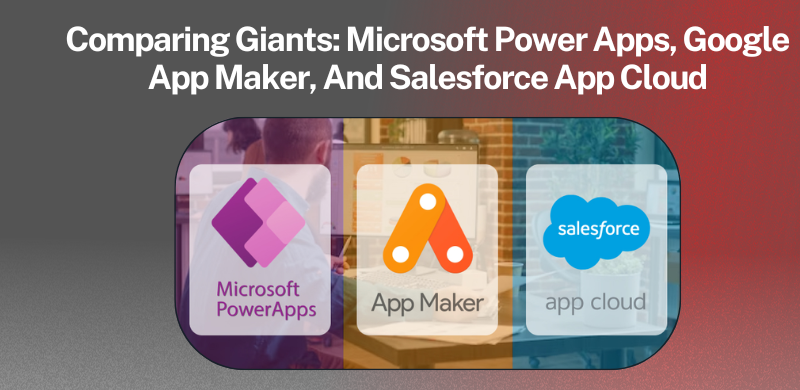In the world of cloud computing, businesses face a critical decision: whether to adopt a multi-cloud or single-cloud strategy. This choice can significantly impact a company’s operations, costs, and overall success in the digital era. To help you make an informed decision, we’ll break down the key differences between these strategies, their pros and cons, and offer insights to guide your business in selecting the right approach.
Understanding the Basics: Single-Cloud and Multi-Cloud Strategies
Before delving into the pros and cons, let’s clarify what single-cloud and multi-cloud strategies entail:
- Single-Cloud Strategy:
- A single-cloud strategy involves relying on a single cloud service provider for all your computing and storage needs. Companies typically choose one provider like Amazon Web Services (AWS), Microsoft Azure, or Google Cloud Platform (GCP) to host their applications, data, and services.
- Multi-Cloud Strategy:
- A multi-cloud strategy, on the other hand, entails using services from multiple cloud providers simultaneously. Companies can blend offerings from AWS, Azure, GCP, or other providers to meet their specific requirements. This strategy aims to diversify a business’s cloud portfolio and reduce reliance on a single provider.

Single-Cloud Strategy: The Pros and Cons for App and Web Development
Pros:
- Simplicity: A single-cloud strategy simplifies things. You’re dealing with one provider, one set of tools, and one bill to pay. For app and web development projects, this can make management and coordination more straightforward.
- Seamless Integration: Cloud providers often offer a suite of integrated services that work well together within their ecosystem. This can speed up development and deployment of apps and websites.
- Expertise: By focusing on one cloud provider, your offshore dedicated team can become experts in that platform. This can result in more efficient utilization of its services and better outcomes.
- Cost Efficiency: For smaller businesses or startups, a single-cloud strategy can be cost-effective. You can often take advantage of bundled services and discounts.
Cons:
- Vendor Lock-In: When you go all-in with one provider, you risk vendor lock-in. This means it can be challenging to migrate your apps or websites to a different cloud provider or on-premises infrastructure.\
- Limited Redundancy: If your chosen cloud provider experiences downtime or outages, your app or website could be in trouble. There’s no backup infrastructure readily available.
- Price Increases: Cloud providers can change their pricing, and if you rely solely on one provider, you might be vulnerable to unexpected cost increases.
- Geographic Limitations: The data centres of your single-cloud provider may not be available in all the geographic regions you need, limiting your ability to serve a global audience effectively.

Multi-Cloud Strategy: The Pros and Cons for App and Web Development
Pros:
- Redundancy and Resilience: A multi-cloud approach enhances redundancy. If one provider experiences issues, you can switch to another, ensuring continuity of your app or website services.
- Vendor Diversification: You’re not tied to a single vendor, which provides flexibility in choosing the best services for your app or web development needs. Different cloud providers excel in various areas.
- Negotiation Power: With multiple cloud providers, you have more leverage for negotiation, potentially leading to better pricing and terms. This can help manage your project costs effectively.
- Global Reach: Multi-cloud allows you to deploy your apps and websites in different regions, reaching a broader global audience. This is especially useful when working with an offshore dedicated team catering to international clients.
Cons:
- Complexity: Managing multiple cloud providers can be complex. It demands more resources, expertise, and time from both your in-house and offshore teams.
- Integration Challenges: Integrating services across multiple clouds can be challenging because different providers use different tools and APIs. Ensuring seamless communication between these services may require extra effort.
- Security Complexity: Security becomes more complex in a multi-cloud environment. It’s vital to ensure that your apps and websites are secure across multiple providers, which can be a challenging task if not managed correctly.
- Cost Management: Cost control can be more challenging in a multi-cloud setting. You need to keep an eye on expenses across multiple providers, which can lead to budget overruns if not closely monitored.

How to Choose the Right Strategy for Your Business
Selecting the right cloud strategy for your business depends on several factors:
- Business Goals:
- Consider your long-term objectives. A single-cloud strategy may be sufficient if you’re a small business with limited resources, while larger enterprises with a global presence might benefit from the redundancy and flexibility offered by a multi-cloud approach.
- Resource Availability:
- Assess your available resources, including staff expertise, budget, and time. A multi-cloud strategy demands more resources and expertise, while a single-cloud strategy may be more manageable for smaller teams.
- Risk Tolerance:
- Evaluate your tolerance for risk and downtime. If your business operations can’t afford even minor disruptions, a multi-cloud strategy with built-in redundancy may be more appealing.
- Cost Considerations:
- Examine your budget constraints. If cost control is a top priority, a single-cloud approach may be more predictable, but a multi-cloud strategy can offer better long-term cost optimization opportunities.
- Compliance Requirements:
- Certain industries or regions may have specific compliance requirements. Check whether your cloud providers can meet these obligations, and whether a single or multi-cloud strategy is more suitable for compliance.
- Technology Stack:
- Evaluate your existing technology stack and how easily it can integrate with different cloud providers. Some legacy systems may work better with a single provider, while modern, flexible architectures might benefit from multi-cloud.
- Vendor Relationships:
- Consider your existing relationships with cloud providers. If you have long-term contracts or relationships with one provider, this might influence your decision.

Real-World Examples
To better understand how these strategies work in practice, here are some real-world examples:
- Netflix: The streaming giant is known for its multi-cloud strategy, using AWS and Google Cloud. This approach ensures seamless streaming and disaster recovery in case one provider experiences problems.
- Spotify: Spotify, on the other hand, relies primarily on Google Cloud. This single-cloud strategy simplifies their operations and allows for closer integration with Google’s data and AI services.
- GEICO: The insurance company has adopted a multi-cloud strategy, utilizing both AWS and Azure. This enables them to take advantage of the strengths of each provider and maintain business continuity.
- Airbnb: Airbnb has adopted a single-cloud strategy by choosing AWS. This approach has enabled them to focus on scaling their services while benefiting from AWS’s global network of data centres.
In conclusion, there is no one-size-fits-all answer to the single-cloud vs. multi-cloud dilemma. Your choice should align with your business’s unique needs, goals, and resources. Smaller companies with limited resources may find single-cloud strategies more manageable and cost-effective, while larger enterprises with complex global operations may benefit from the redundancy and flexibility of multi-cloud strategies. Whatever strategy you choose, be sure to invest in the necessary expertise and planning to make the most of your cloud infrastructure. Finally, keep in mind that cloud strategies can evolve as your business grows, so regular reassessment and adjustments may be necessary to stay competitive in the ever-changing digital landscape.



